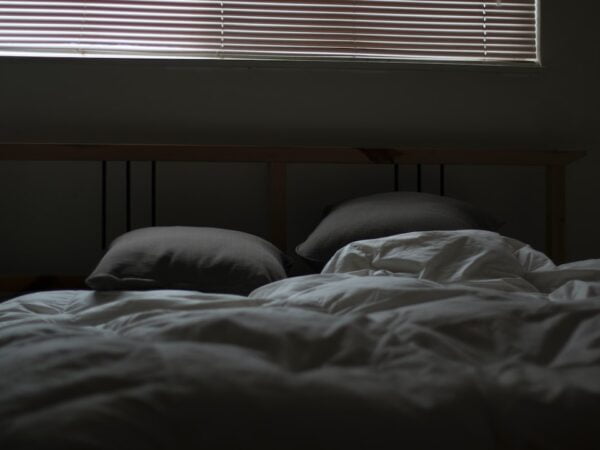
Creating the Perfect Sleep Environment: Tips for a Restful Night’s Sleep
Sleep is a fundamental aspect of our lives that is often overlooked. It is essential for our overall health and well-being, yet many people do not prioritize getting enough restful sleep. Lack of sleep can have a range of negative effects on both our physical and mental health, including decreased cognitive function, impaired immune system, increased risk of chronic diseases, and mood disorders.
Getting a good night’s sleep is crucial for our bodies to function optimally. During sleep, our bodies repair and regenerate cells, consolidate memories, and regulate hormones. It is during this time that our brains process information and emotions, allowing us to wake up feeling refreshed and ready to take on the day.
Key Takeaways
- A restful night’s sleep is crucial for overall health and well-being.
- Understanding your body’s natural rhythms can help improve sleep quality.
- Your sleep environment, including your mattress, bedding, and pillows, can greatly impact sleep quality.
- Creating a relaxing atmosphere with soothing colors and lighting can promote better sleep.
- Establishing a consistent sleep routine and reducing stress and anxiety before bedtime can lead to a better night’s sleep.
The Science of Sleep: Understanding Your Body’s Natural Rhythms
Our bodies have a natural sleep-wake cycle, also known as the circadian rhythm. This internal clock regulates our sleep patterns and is influenced by external factors such as light and darkness. When it gets dark outside, our bodies produce melatonin, a hormone that helps us fall asleep. In the morning, when it gets light outside, melatonin production decreases, signaling our bodies to wake up.
Sleep is divided into different stages, each with its own functions. The first stage is light sleep, where we can be easily awakened. The second stage is deeper sleep, where our brain waves slow down and our body temperature drops. The third stage is deep sleep, also known as slow-wave sleep, which is essential for physical restoration. Finally, we enter REM (rapid eye movement) sleep, where most dreaming occurs and our brains are highly active.
The Role of Your Sleep Environment in Achieving Restful Sleep
Creating a comfortable and relaxing sleep environment is crucial for achieving restful sleep. Your bedroom should be a sanctuary dedicated to rest and relaxation. Start by decluttering your space and keeping it clean and organized. This will help create a sense of calm and promote relaxation.
Light and noise can significantly impact sleep quality. Make sure your bedroom is as dark as possible by using blackout curtains or blinds. Consider using earplugs or a white noise machine to block out any disruptive sounds. Additionally, maintaining a comfortable temperature in your bedroom is essential. The ideal temperature for sleep is around 65 degrees Fahrenheit (18 degrees Celsius).
Choosing the Right Mattress and Bedding for Your Sleep Needs
| Factors to Consider | Importance | Options |
|---|---|---|
| Comfort | High | Memory foam, latex, hybrid, innerspring |
| Support | High | Firmness level, coil count, foam density |
| Size | Medium | Twin, full, queen, king, California king |
| Temperature regulation | Medium | Gel-infused foam, breathable materials, cooling technology |
| Motion transfer | Low | Memory foam, latex, hybrid |
| Durability | Low | Coil gauge, foam density, brand reputation |
Choosing the right mattress and bedding is crucial for achieving restful sleep. Factors to consider when choosing a mattress include firmness, support, and material. The ideal mattress should provide proper spinal alignment and relieve pressure points. Memory foam mattresses are known for their ability to contour to the body, while innerspring mattresses offer more bounce and support.
When it comes to bedding materials, there are various options available, including cotton, linen, silk, and bamboo. Each material has its own benefits and drawbacks. Cotton is breathable and easy to care for, while linen is known for its durability and moisture-wicking properties. Silk is luxurious and hypoallergenic, while bamboo is eco-friendly and naturally antimicrobial.
Finding the right fit for your sleep needs may require some trial and error. Consider factors such as your preferred sleeping position, body type, and any specific health concerns you may have. It’s also important to consider your budget when making these decisions.
The Benefits of Investing in High-Quality Pillows and Linens
Pillows and linens play a significant role in sleep quality. The right pillow can provide proper neck support and alignment, reducing the risk of neck pain and stiffness. It’s important to choose a pillow that suits your preferred sleeping position. Side sleepers may benefit from a firmer pillow to keep their neck aligned with their spine, while back sleepers may prefer a flatter pillow.
Investing in high-quality linens can also improve sleep quality. Soft and breathable linens can help regulate body temperature and wick away moisture, keeping you cool and comfortable throughout the night. Additionally, high-quality linens are more durable and will last longer, making them a worthwhile investment.
Creating a Relaxing Atmosphere with Soothing Colors and Lighting
The colors and lighting in your bedroom can have a significant impact on sleep quality. Cool and soothing colors such as blues, greens, and grays promote relaxation and calmness. Avoid using bright or stimulating colors such as red or orange, as they can be energizing and disrupt sleep.
In terms of lighting, it’s important to create a dim and relaxing atmosphere in your bedroom. Avoid bright overhead lights and opt for softer lighting options such as bedside lamps or dimmer switches. Consider using warm-colored light bulbs to create a cozy ambiance.
The Impact of Noise and Temperature on Sleep Quality
Noise can be a major disruptor of sleep. Even low-level noises such as traffic or a ticking clock can prevent you from falling asleep or wake you up during the night. To reduce noise in your sleep environment, consider using earplugs or a white noise machine. White noise machines produce a consistent sound that masks other noises, helping you fall asleep and stay asleep.
Temperature also plays a crucial role in sleep quality. The ideal temperature for sleep is around 65 degrees Fahrenheit (18 degrees Celsius). If your bedroom is too hot or too cold, it can disrupt your sleep and make it difficult to fall asleep or stay asleep. Use fans or air conditioning to cool down your room in the summer, and consider using extra blankets or a space heater in the winter.
Strategies for Reducing Stress and Anxiety Before Bedtime
Stress and anxiety can significantly impact sleep quality. Racing thoughts and worries can make it difficult to relax and fall asleep. It’s important to find strategies to reduce stress and anxiety before bedtime to promote restful sleep.
One effective strategy is to establish a bedtime routine that includes relaxation techniques. This can include activities such as reading a book, taking a warm bath, practicing deep breathing exercises, or listening to calming music. Avoid engaging in stimulating activities such as watching TV or using electronic devices, as the blue light emitted by these devices can interfere with melatonin production and disrupt sleep.
The Benefits of Establishing a Consistent Sleep Routine
Establishing a consistent sleep routine is crucial for achieving restful sleep. Our bodies thrive on routine and regularity, and having a consistent sleep schedule can help regulate our internal clock and improve sleep quality.
Try to go to bed and wake up at the same time every day, even on weekends. This helps regulate your circadian rhythm and makes it easier to fall asleep and wake up naturally. Avoid napping during the day, as this can interfere with your ability to fall asleep at night.
Putting It All Together for a Better Night’s Sleep
In conclusion, achieving restful sleep is essential for our overall health and well-being. By understanding the science of sleep, creating a comfortable sleep environment, choosing the right mattress and bedding, investing in high-quality pillows and linens, creating a relaxing atmosphere with soothing colors and lighting, controlling noise and temperature, reducing stress and anxiety before bedtime, and establishing a consistent sleep routine, we can improve our sleep quality and wake up feeling refreshed and rejuvenated.
It’s important to prioritize sleep and make it a priority in our daily lives. By implementing these strategies and making small changes to our sleep habits, we can reap the benefits of restful sleep and improve our overall health and well-being. So, let’s make sleep a priority and give our bodies the rest they deserve.
FAQs
What is a sleep environment?
A sleep environment refers to the physical surroundings in which a person sleeps, including factors such as lighting, temperature, noise, and bedding.
Why is a good sleep environment important?
A good sleep environment can help promote better sleep quality, which is essential for overall health and well-being. It can also help reduce the risk of sleep disorders and other health problems.
What are some factors that can affect the sleep environment?
Factors that can affect the sleep environment include noise levels, temperature, lighting, bedding, and the presence of electronic devices.
What is the ideal temperature for a sleep environment?
The ideal temperature for a sleep environment is generally between 60 and 67 degrees Fahrenheit (15.6 to 19.4 degrees Celsius).
What kind of bedding is best for a sleep environment?
The best bedding for a sleep environment is typically made of breathable materials, such as cotton or linen. It should also be comfortable and supportive.
How can electronic devices affect the sleep environment?
Electronic devices such as smartphones, tablets, and televisions emit blue light, which can interfere with the body’s natural sleep-wake cycle. They can also be a source of noise and distraction, which can make it harder to fall asleep and stay asleep.


















